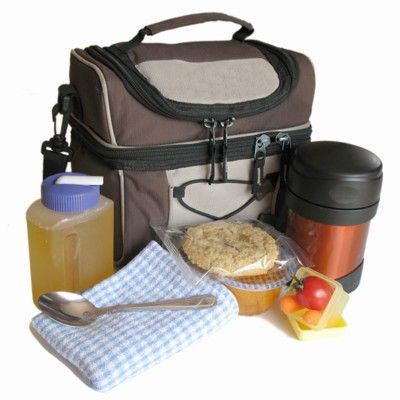What's more exciting at the start of each new school year than picking out a new lunch box? Children choose boxes carefully, debating which design fits them best. Kids and lunch boxes just go together -- like, well, peanut butter and jelly.
Just Like Dad's
Advertisement
However, the first lunch boxes weren't for kids at all. In the late 1800s, blue-collar workers carried their lunches to work in metal pails, which protected their food from the rigors of the workplace. In fact, your lunch pail illustrated your place on the economic scale -- a lunch pail meant you couldn't afford a hot noontime meal. This didn't stop children from wanting to emulate their working parents, however. Soon enough, kids fashioned their own lunch pails from tin boxes that were originally used to hold cookies or tobacco. Early mass-produced lunch pails for children resembled picnic baskets and featured illustrations of kids playing.
The Golden Age of Lunch Boxes
The first character-licensed lunch box came out in 1935, and it featured Mickey Mouse. But the lunch box market didn't really explode until the 1950s. Up until that point, Aladdin Industries sold plain, steel "lunch kits." Looking for new ways to grow its market, in the early 1950s, it released a lunch box emblazoned with a decal of Hopalong Cassidy. Sales boomed, and American Thermos soon followed suit. It released a Roy Rogers lunch box with full color lithography on all sides of the box. Character-based lunch boxes meant that kids would want a new one every year, depending on what TV show or movie was hot at the time. An industry was born -- 120 million lunch boxes were sold between 1950 and 1970. Most boxes came with a matching Thermos. These Thermoses originally were made of steel and insulated with glass. But over time, the Thermos evolved to a plastic version.
In 1962, Aladdin further revolutionized the lunch box by embossing the front and back, adding a 3-D effect to the artwork. The "dome" shaped lunch box showed up around the same time, echoing the early designs of the worker's lunch pail. In the 1960s, the vinyl lunch box was introduced. It was made of plastic, heat-sealed over cardboard. These pink boxes were targeted toward girls. Vinyl boxes never really caught on, however, since they were rather flimsy.
The Fall of the Metal Lunch Box
Cost-cutting measures in the 1970s rang in the era of the plastic lunch box. Many say the death knell of the metal lunch box came in the early 1970s when Florida banned metal lunch boxes, fearing kids would use them as playground weapons. However, this seems to be folklore [source: Los]. More likely, plastic lunch boxes were much cheaper to produce. The last metal lunch box of its time came out in 1987, and it featured the film character Rambo.
Thermos brought back the metal lunch box in 1998, but they produce only a few per year. Today, most metal lunch boxes are in the hands of collectors. But don't expect to rake in a ton of cash for your old lunch box if it's scuffed, rusted or missing its original Thermos. Most vintage lunch boxes net between $10 and $100.
For the most part, today's lunch boxes are soft, made with insulated vinyl and foam -- a style that fits better into a child's backpack. Character-licensed lunch boxes never went out of style, however. Instead of G.I. Joe or The Beatles, today you'll see faves like Hannah Montana or The Wiggles. You'll also find lunch boxes made out of recycled materials.
Advertisement

